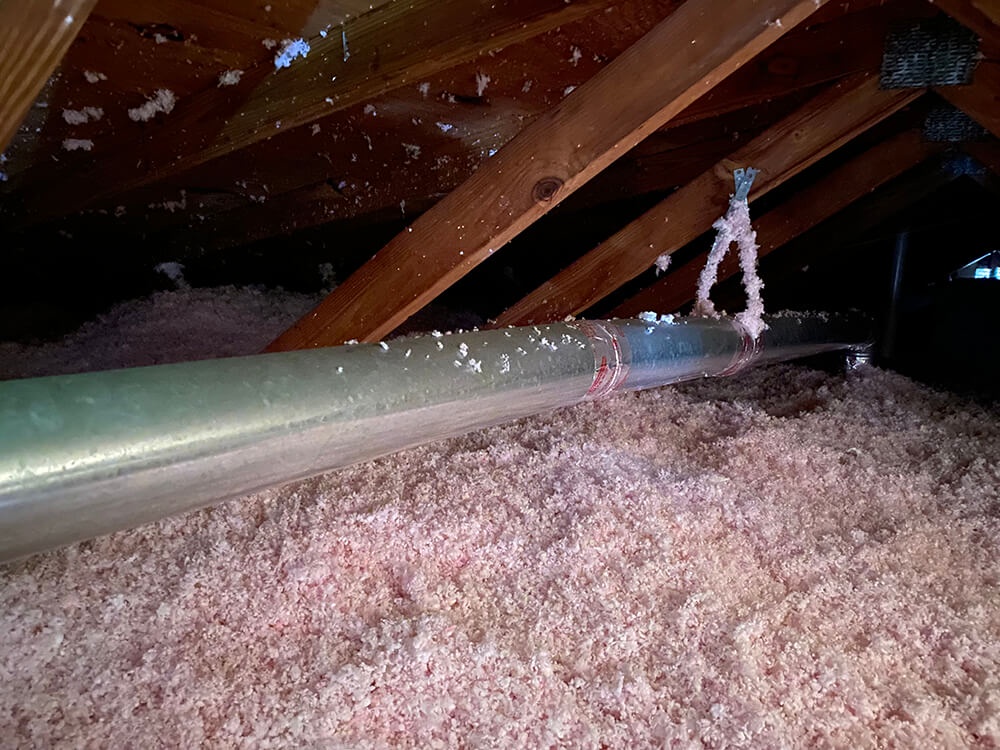Blow-in insulation has been increasing in popularity over recent years as an affordable and effective way to improve energy efficiency in existing homes. But how do you know if it’s the right insulation solution for your home? In this post, we’ll cover all about blow-in insulation—what it is, how it works, its pros and cons—and provide guidance on determining if it meets your needs.
What is Blow-in Insulation?
Blow-in insulation is a loose-fill insulation made up of small particles of fiber or foam that are blown into wall cavities, attics, and other hard-to-reach places in a home using specialized compressed air equipment. The small particles emerge from the hose and interlock when making contact, forming a cohesive layer. This blown-in layer then acts as an air-sealing barrier and insulator against heat loss.
Blow-in insulation is typically made up of cellulose fibers, fiberglass, or mineral wool. Some key benefits over traditional batt insulation include:
Flexibility – tiny particles fill gaps and conform to spaces traditional batts struggle to reach Air sealing – when installed properly, the dense packing seals air leaks, enabling increased efficiency Affordability – lower cost per square foot compared to installing batt insulation Higher R-values – the most effective types provide insulation R-values of R-3 to R-4.5 per inch Easy installation – no need for cutting to fit irregularly shaped areas like eaves Improved comfort – minimizes drafts, creating more even internal temperatures
How Blow-in Insulation Works
Blow-in insulation in installed via holes drilled into the area, then pumped full through tubes at a rapid pace. As the large hose blows in these loose particles, they quickly stack in the cavity, filling every nook and cranny without much of the settling associated with batt insulation. The friction of particles sticking to each other keeps it in place within wall studs or between attic rafters. A dense pack application involves adding just the right amount of insulation to achieve the highest R-value without compromising space. An even, consistent application helps it deliver on thermal protection and sound dampening goals.
Most types of blow-in insulation used today require no additional supports, vapor barriers or preparation. It’s an easy upgrade for finished areas, requiring no drywall or wall covering removal. And since no debris is left behind, homeowner disruption is minimal. Some do recommend an attic ventilation calculation prior to installing any attic insulation to ensure eave flow remains unobstructed. But in most standard applications, a professional installer handles attic prep along with proper hose placement as part of the installation process.
Key Pros of Blow-in Insulation
When trying to determine the best insulation for your home, understanding the advantages of blow-in options can inform your decision-making:
- Customization and Conformity – loose fill particles naturally spread evenly and reach every nook and cranny
- Reduced Air Leakage – the dense packed material air-seals exceptionally well
- Cost Effectiveness – lower materials cost and easy installation equates to higher ROI
- Existing Home Retrofit Capability – no need to remove existing insulation in order to reuse space
- High Insulative Ratings – R-values between R-2 and R-4.5 per inch depending on material
- Noise Reduction Qualities - reduces transmission of sound through walls and between floors
- Non-Toxic and Sustainable Materials – many modern options made from 85% recycled materials
Considerations Before Installing Blow-in Insulation
While ideal for many homes, blow-in insulation may not address every insulation requirement. Factors like climate, budget, accessibility and special structural needs require evaluation.
Before deciding on blown-in insulation, ensure it's the optimal choice by considering:
- House Design – oddly shaped bay windows or non-standard framing requires specialty prep
- Budget – installed costs may run higher than basic batts in some regions
- DIY Skill Level – incorrect machine use risks improper fill density or settling issues
- Accessibility – if walls or ceilings lack easy entry points, open cavities may be preferable
- Climate Extremes – may require supplemental moisture barriers in very cold or humid regions
- Attic Eave Ventilation Needs – baffles ensure airflow post-installation
In most typical, modern home constructions, blow-in is a strong insulation contender if proper prep and installation protocols are used. But be sure to consult a pro if your project falls outside the norm.
Determining if Blow-In Meets Your Home's Needs
Here are some key questions to help discern if blow-in insulation is the right solution for your residential insulation project:
- What areas need better insulating? Attic, walls and finished rooms may all benefit from blown-in.
- What's your budget? Material and labor costs vary by region. Compare DIY vs. pro-installed options.
- How old is your home? Pre-1930s homes may require extra prep for blown-in suitability. Consult an expert.
- What's your climate? Supplemental barriers may be advisable in extreme hot, cold or humidity.
- Can cavities be accessed? Blown-in requires drill-point entry. If walls are unreachable, other insulations may work better.
- Are attics properly vented? Proper eave ventilation is crucial to prevent moisture issues.
Answering questions like these will help determine optimal routes. Many homeowners find blow-in provides the customization, efficiency and value right-sized for their homes’ needs.
In Closing: Why Go Blown-In?
Blow-in attic insulation offers a customizable, budget-friendly efficiency upgrade for existing homes. Its dense-pack advantages and simple installation may resolve comfort and energy usage issues in attics, walls and challenging-to-insulate spaces. Though not a catch-all solution, blown-in has unique perks making it the top choice for many homeowners seeking to cut energy costs and improve thermal regulation.


No comments yet